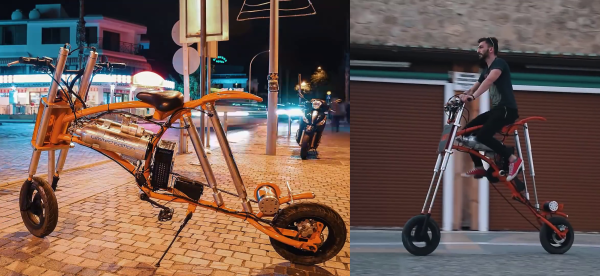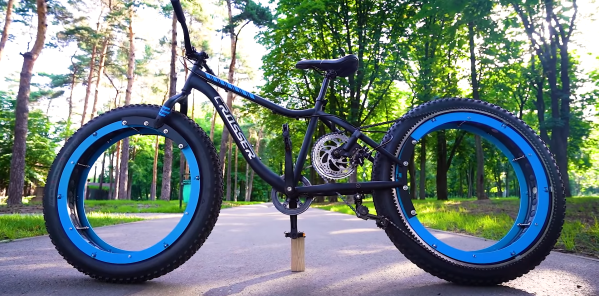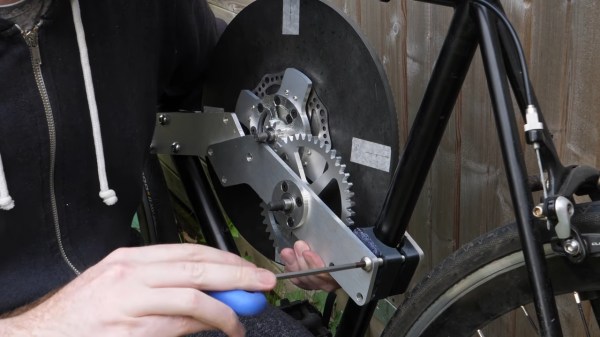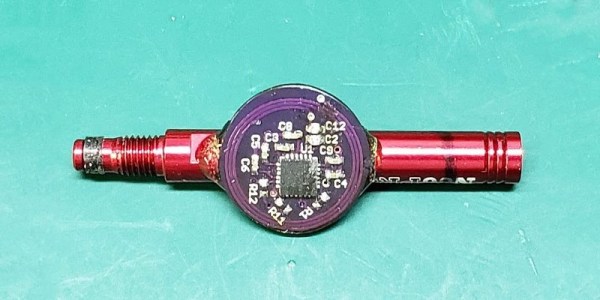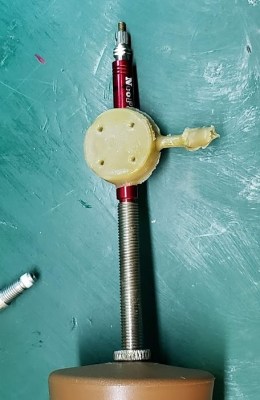Some bicycles are built primarily for practicality, while others are more focused on novel looks. [Make It Extreme]’s latest project, the extending bicycle, falls squarely in the latter category.
Built around four custom-machined pneumatic pistons, this electric bike can lift the rider about a meter into the air with the flick of a switch. The front pair forms the bicycle’s forks, while the rear pair is mounted between the frame and swingarm. A small onboard compressor is used to charge a pair of modified fire extinguishers, which feed the pistons via pneumatic valves mounted on the handlebars. The wheels and brakes were scavenged from an old scooter. Since the length between the crankset and rear wheel never changes, there is no need to struggle with chain tensioners as the ride height changes.
While we would hate to face-plant from that height, it certainly looks like a fun ride and conversation starter. This is the case for many of [Make It Extreme]’s projects, like a ridable tank track and monowheel motorcycle.
Continue reading “Extending Bicycle Will Let You Stand Out Above The Crowd”

